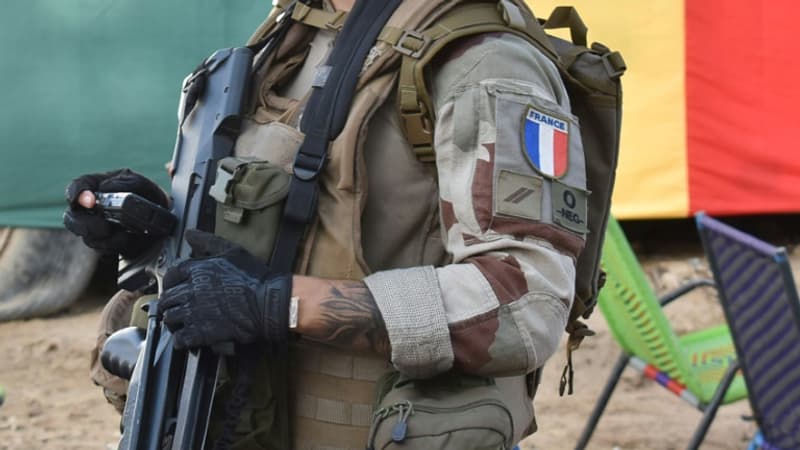Three months after the withdrawal of French troops, Emmanuel Macron announced on Wednesday the official end of the anti-jihadist operation that Barkhane launched in 2014 in the Sahel. Following increased criticism of the French forces by local political authorities, the Head of State announced last February the withdrawal of the French troops committed to the country.
“It is not a failure”, he repeated on this occasion. “What would have happened in 2013 if France had not chosen to intervene? It would certainly have had a collapse of the Malian state.”
At the beginning of Operation Barkhane, 3,000 soldiers were involved in the system. Over the years, the numbers have increased to 5,100 soldiers in 2020. French troops also receive human and, above all, material support from European countries or the United States. The operation ends with a high number of victims: 59 French soldiers lost their lives on the ground.
The success of Operation Serval
Operation Barkhane was launched in 2014 in collaboration with the five countries of the Sahelo-Saharan zone (Mauritania, Mali, Burkina Faso, Niger and Chad), members of the G5 Sahel. The objective: to fight against the jihadist armed groups throughout the region.
In 2012, Islamists associated with Al-Qaeda in the Islamic Maghreb (AQIM) took control of northern Mali. At the express and urgent request of the Malian authorities, France launched Operation Serval in 2013 to stop these jihadist columns and allow the Malian state to regain sovereignty over its entire territory.
“Operation Serval in 2013 clearly put an end to the terrorist attempt to establish a caliphate and take control of the capital Bamako,” said Thierry Arnaud, an international political columnist for BFMTV, in August.
“A half-hearted balance sheet”
Key figures of jihadism in the region have been eliminated by France, as Abdelmalek Droukdalat the head of AQIM, in June 2020. But these very significant losses underscore on the contrary its ability to regenerate over time.
In February 2022, the Mediapart site claimed to have calculated that at least 2,800 jihadists have been killed in the Sahel by French troops since 2013, including 600 in the first months of Operation Serval and 2,223 since the beginning of 2014.
“It is a mixed record for the French armed forces (…). The deployment of Barkhane made it possible to contain the progression, but it is true that the terrorists later managed to re-establish their presence”, continues Thierry Arnaud.
Weakened, the Islamic State has been pushed further north. However, in the east of the country, in the “three borders” region, the Islamic State of Greater Sahara (EIGS) is carrying out major offensives. At the same time, the Group for the Support of Islam and Muslims (GSIM), an Al-Qaeda-affiliated jihadist group, has also gained momentum.
Mali has seen an escalation of the war and an acceleration of the jihadist expansion in recent years. Attacks are increasing to the south, including around Bamako.
The training of the Malian armed forces
In addition to preventing the jihadists from reaching the capital and restoring security in northern Mali, the objective of Operation Barkhane was also to support the Malian state in regaining control and guaranteeing the security of the country.
The French forces thus participated in a formation of the Malian army (Fama). According to Colonel Raphaël Bernard, author of the book In the heart of Barkhanethis effort has borne fruit “with an increase from 7,000 to 40,000 men”, he explains to franceinfo.
However, “we did not achieve the final objective, which was to increase the power of the Famas so that they are capable of taking charge of the security of their country. We were not at the end of the mission, ”he laments.
The Malian authorities, due to lack of means or will, have not regained ground and have not installed services or security forces in neglected regions, especially in the north of the country.
The ruling military junta
“The coming to power of a nationalist military junta was a turning point for the French forces: the conditions for the French mission to be a success no longer existed”, explains Thierry Arnaud.
If Operation Barkhane did not completely prevent the proliferation of jihadists, it was the political situation in Bamako that marked its end. In August 2020 and then in May 2021, two successive coups rocked Mali and put power in the hands of a junta that quickly played the card of anti-French sentiment. Bamako appealed to the Russian Wagner mercenaries, who hastened the French eviction in particular with massive disinformation campaigns.
“We cannot remain militarily engaged alongside de facto authorities whose strategy or hidden goals we do not share either,” Emmanuel Macron declared, announcing the end of the operation. The French army definitively left the country in mid-August, after nine years of anti-jihadist struggle.
Source: BFM TV


